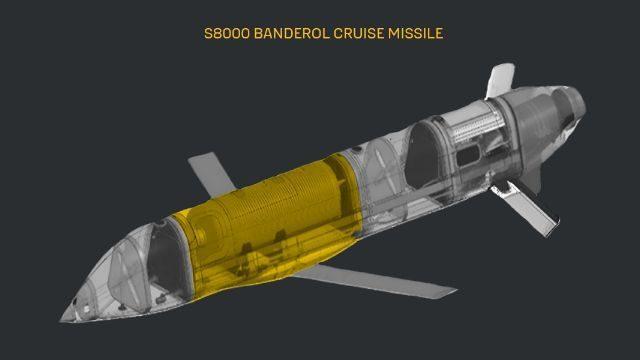S8000 Banderol Missile: Captured Parts and Global Supply Chain
Ukraine’s military intelligence agency, HUR, has released an illuminating report regarding the components of a captured Russian cruise missile, the S8000 “Banderol”. This report highlights a striking detail: the missile’s construction involves parts sourced from multiple countries, raising questions about compliance with international sanctions. The missile, developed by the prominent Russian defense firm Kronstadt Group, integrates a variety of foreign components, including Muramata batteries and Toshiba phototransistors from Japan, indicating a complex web of global supply chain interdependencies.
Moreover, the missile is equipped with a telemetry module known as RFD900x hailing from Australia, as well as Dynamixel MX-64AR servo drives manufactured by South Korea’s Robotis company. In addition, it includes a radio-frequency amplifier from US-based Maxim Integrated, a microcontroller from Switzerland’s STMicroelectronics, and a turbojet engine from Chinese manufacturer Swiwin. The report asserts that many of these parts, originally designed for commercial use, were likely rerouted through conventional supply chains to circumvent existing restrictions.
The Implications of Component Sourcing
HUR has voiced concerns regarding the implications of such sourcing, stating, “Thousands of electronic components, originally intended to improve lives and fuel development, are perversely repurposed by aggressors into instruments of violence.” This stark reality underscores the heavy reliance of weaponry on foreign-made parts, necessitating a strategic disruption of these supply chains to weaken aggressors’ combat capabilities. According to HUR, breaking these channels will impede the foes’ ability to wage war, thereby potentially saving lives and offsetting further aggression.
This is not a novel occurrence, as Ukraine has previously identified foreign components in seized Russian military equipment since the onset of hostilities. In May 2022, for instance, Ukrainian forces reported the recovery of US-made microchips within a captured Pantsir air defense system and a Kh-101 cruise missile. By April 2025, additional evidence emerged of a loophole exploited by Moscow’s military suppliers, notably a clock buffer developed by Indian-based Aura Semiconductor, found in various Russian weapon systems.
Defining the Banderol Missile
The S8000 Banderol missile is engineered for performance, boasting high maneuverability and a formidable warhead that weighs up to 150 kilograms (330 pounds). With a maximum speed of 650 kilometers (403 miles) per hour, it possesses an operational range of up to 500 kilometers (310 miles), making it a significant threat on the battlefield. Its design not only emphasizes striking capabilities but also showcases adaptability, as the missile is thought to have been launched from the same drones that Kronstadt Group manufactures.
In addition to drone deployment, the Banderol missile is being adapted for use with Mi-28N attack helicopters, broadening its versatility and operational reach within the Russian military arsenal. The convergence of these technologies illustrates a strategic evolution on Russia’s part, enhancing their attack vector capabilities in ongoing military engagements.







